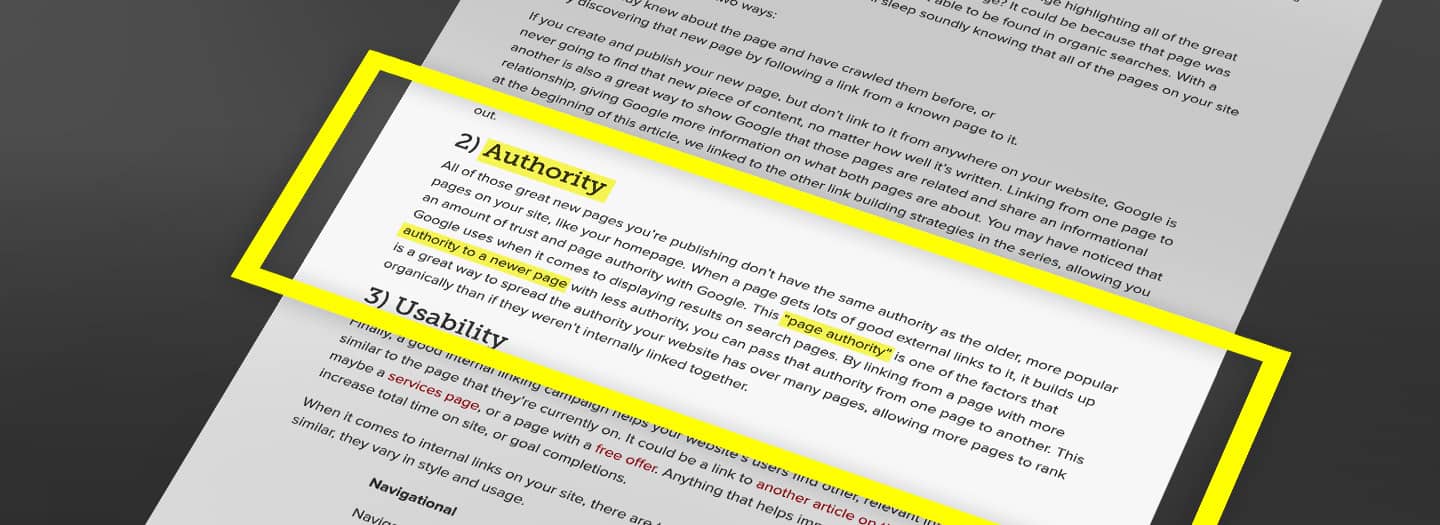In February 2021 Google released a new search algorithm update to help longer form pages and content rank highly in the SERPs. While this update caught the attention of the SEO world when it was announced, it’s quietly become an afterthought for many. Given that the update didn’t affect content writers, some people may not remember what the update did and how it’s affecting the SERPs we see today.
If you need a quick refresher on what the Google Passages update is and the purpose behind it, we’ve put together this recap of what the update changed and how to take it into consideration when writing new content.
What Is Google Passages?
Google Passages was/is an update on Google’s end that allowed their crawlers to scan and separate the content on a page and serve this content to various relevant search queries. This means that one section of your page can rank for one term and another section on that same page can rank for a completely different term. This change allows content that may not be written or structured “properly” to have a chance to rank highly in the SERPs, something that it otherwise wouldn’t be able to do.
That sounds good in theory, but what does this update mean in the real world?
Google Passages in Action
Say you have a page with lots of recipes on it on how to bake many different kinds of pies. Before this update, Google would be able to understand that the page was about pie recipes but the page would struggle to rank for searches for a specific type of pie recipe, like “how to make an apple pie.”
Now imagine your competitor’s website had all of their pie recipes on individual pages. Google could see what each page is about and all of those pages rank highly for their respective recipes, again, like “how to make an apple pie” or “how to make a pumpkin pie.”
After the release of Google Passages, Google is able to understand and parse out each pie recipe on your single page and can show just that particular section in the SERPs when someone is looking for “how to make an apple pie.” This doesn’t mean the Google bot is only indexing that one section of the page, it still indexes the whole page, but this update allows content that would otherwise have been buried deep in the page to get a chance to rank at the top of the SERP. This even opens up the possibility of getting a “passages snippet”, which is similar to, but different from, a featured snippet.

A featured snippet is what you would generally think of for a searched phrase—it’s the area at the top of the SERP that directly answers the searched question without the user having to click into the website and get their answer. There are different kinds of featured snippets depending on the search query, but that’s an explanation for a different blog post. This new “Passage Snippet” is a short sentence or two on a page that answers the user’s search query. This passage snippet may or may not directly answer the question, but is an easy way for the searcher to follow the link through to the website and easily get to their answer. This will look like a regular featured snippet in the SERP, but, when clicked, Google will take the user down the page to the specific section or paragraph that answers their question without the user having to start at the top of the article and scroll down to find the answer themselves.
No Change Needed
Luckily this update doesn’t require content writers to do anything differently, especially if they’re already writing content with SEO best practices in mind. This update is on Google’s end and not something that actively needs a writer’s attention. As long as the content is written in an easy-to-understand manner with a page for each separate thought topic, there isn’t anything else that needs to be done. Follow the standard best practices and use various header level tags to help Google understand the content on your page and the smaller sections that make up the larger article.
While it’s uncertain if Google actually uses header tags to help rank and serve content for passages, it’ll help your human readers skim the article and find the information they’re looking for. After all, user experience is one of the largest ranking metrics.
In short, focusing on providing quality content that actual humans can find and understand should be your first priority; other than that, you’re all set and ready to keep ranking highly with Google.
If you’re looking for a more in-depth look at the Google Passages update, Search Engine Journal has a great article from when the update was released that features an interview with Martin Splitt from Google.
Want to get more ideas on how to improve your SEO performance for 2022? Read our white paper on 16 Tips for Better SEO Rankings. Ready to win more website traffic and have a site optimized for semantic search? Reach out to the a(m) team to get started.
